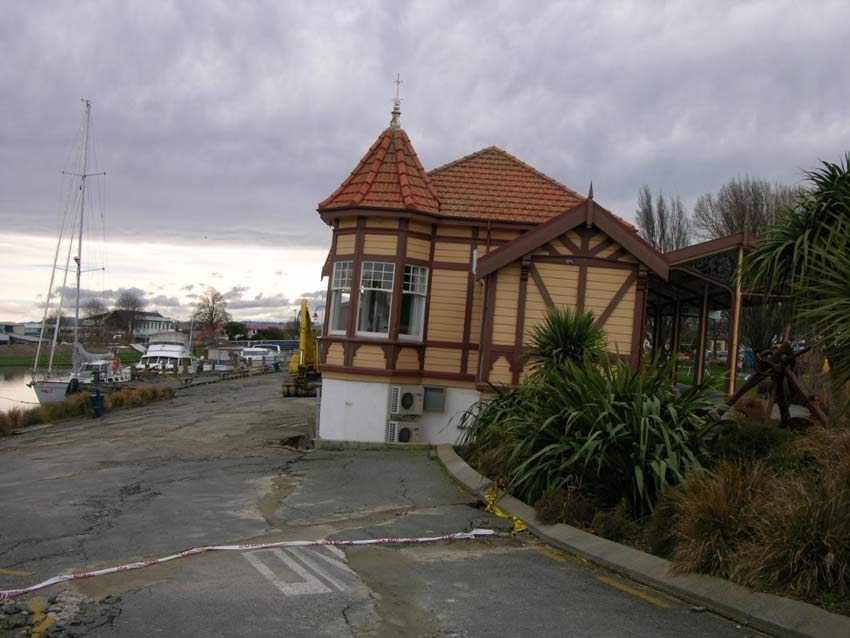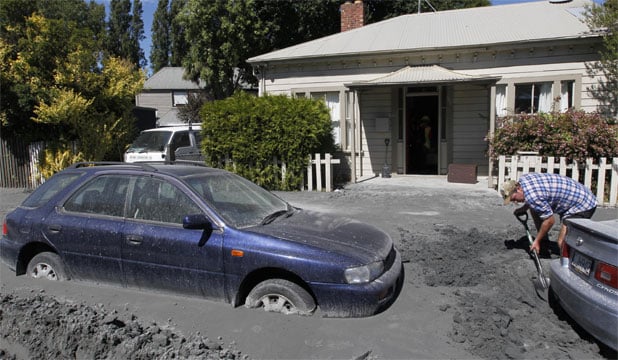We expect the earth beneath our feet to be solid ground, but there are circumstances in which it can behave more like a thick soup. When I was a kid I loved to stand by the water’s edge on a beach, wiggling my toes, and watching as my feet disappeared into the wet sand. Although I didn’t know it at the time, that was my introduction to liquefaction.
Exactly seven years ago, on February 22, 2011, the City of Christchurch in New Zealand experienced the most destructive in a long series of earthquakes to strike the region. Five months after a devastating earthquake struck the area in September 2010, the February M6.1 temblor caused massive damage in and around the city. More than 15,000 single-family homes and hundreds of buildings in the central business district were damaged. Christchurch is New Zealand’s oldest city, and it contained many vulnerable unreinforced masonry buildings (and/or buildings with insufficient detailing). Because the region was perceived to have low seismicity, the impacts of the earthquakes were exacerbated by a lack of preparedness. And because so much of the city is built on loose sand and silt deposits, there was an unprecedented amount of damage from liquefaction.

Liquefaction is most likely in areas with loose coarse-grained soils at or near the ground surface, which have poor drainage and are saturated with water. An example would be loose deposits found along riverbeds, beaches, dunes, and other areas where sand has accumulated. When a strong earthquake strikes an area saturated with groundwater, the shaking can cause the soil to temporarily lose its stiffness due to increased pore water pressure and behave as a liquid, much like a quicksand. When this happens, the soil loses its ability to support vehicles and structures, and buoyant pipes buried within it rise. To see a simple table-top demonstration of liquefaction in action, watch this video from the Illinois State Geological Survey.
In a built environment, liquefaction can be extremely damaging. Roads can become impassable, pipelines and ducts can float upward and surface, and as the liquefied soil shifts, it can break buried utility lines. Liquefaction can cause entire buildings that do not have a proper foundation to suddenly sink, tilt, or even topple over. Structures in parts of San Francisco were damaged by liquefaction during the 1906 earthquake, but the damage to its water supply caused by liquefaction made it harder to fight the fires that followed—which created far greater losses than the initial ground shaking itself.

If the saturated soil lies underneath a dry crust, the ground motion can crack the top soil, allowing the liquefied sand to erupt and create sand boils. These can spread through utility openings into a building and damage the structure, pipelines and its electrical system. Liquefaction can cause levees and earth dams to lose stability or collapse; during the 1971 San Fernando earthquake in Southern California, for example, the Lower San Fernando dam came close to collapsing and inundating the heavily populated areas below it. Earthquakes can also cause liquefaction damage in the form of lateral spreading; saturated gentle slopes—such as those along the banks of rivers and lakes or against bridge abutments—can experience failure and movement.
Liquefaction is a hazard that affects many locations around the world. Even the Back Bay in Boston, where I am sitting as I write, is susceptible. Like Christchurch, Boston is an old city perceived as having low seismicity due to the infrequency of historical events and many of its buildings were constructed before there were any seismic provisions in the local building code. The Back Bay area contains a wealth of unreinforced masonry structures and is largely built on land reclaimed from salt marshes in the nineteenth century.
Although it is considered as a secondary hazard, liquefaction can make a significant contribution to earthquake-related losses in some areas worldwide. Fortunately, understanding of the hazard and appreciation of the risk have improved due to lessons learned from events like the February 2011 Christchurch earthquake.
Read about another major city’s risk in “Liquefaction Potential In and Around Manila”



